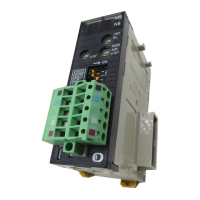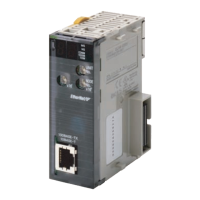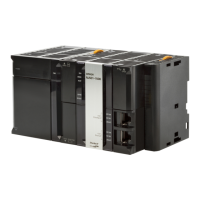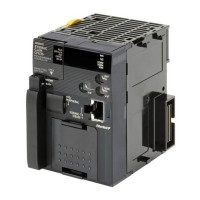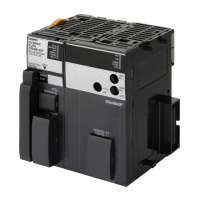14
CJ1-H and CJ1M CPU Unit Features Section 1-3
1-3-2 High-speed Structured Programming
To further aid standardized programming, program structuring functions have
been improved, as has program execution speed.
More Cyclic Tasks Tasks provide better efficiency by enabling programs to be separated by func-
tion or for development by different engineers. The CJ1-H CPU Units support
up to 288 cyclic tasks, an incredible increase over the previous maximum of
32 tasks.
Common Processing from
Multiple Tasks
Global subroutines that can be called by any task are now supported. These
can be used for common processing from more than one task, for greater
standardization.
Faster Subroutine
Instructions
Subroutine instruction are executed approximately 9 or 17 times faster to
enable greater program modularization without having to be concerned about
increasing the cycle time.
Shared Index and Data
Registers between Tasks
Although separate index and data registers can still be used in each task, they
have been joined by shared index and data registers that can be used
between tasks to reduce the time required to switch between tasks.
1-3-3 More Instructions for Specific Applications
Very specific control can be easily programmed for a much wider range of
applications with the many new special instructions added to the CJ1-H CPU
Units.
High-speed Positioning
for XY Tables
Double-precision floating-point calculations are supported for the CJ1-H CPU
Units to provide even better precision for position control operations.
Convert between Floating
Point and Text String Data
To display floating-point data on PTs, the CJ1-H CPU Units provide conver-
sion instructions from floating-point data to text strings (ASCII). Conversion
between ASCII and floating-point data is also possible so that ASCII data from
serial communications with measurement devices can be used in calcula-
tions.
Accurate Line
Approximations
Unsigned 16-bit binary/BCD data, signed 16/32-bit binary data, or floating-
point data can be used for line data, enabling precise (high data resolution)
conversions, such as from a level meter (mm) to tank capacity (l) based on the
shape of the tank.
Realtime Workpiece Data
Management
When loading and unloading workpieces from conveyor lines, workpiece infor-
mation can be managed in realtime in table format.
PID Autotuning Autotuning is now supported for PID constants with the PID CONTROL
instruction. The limit cycle method is used to ensure rapid autotuning. Very
effective for multiloop PID control.
System Debugging
through Error Simulation
A specified error status can be created with the FAL/FALS instructions. This
can be used effectively when depending systems. For example, errors can be
simulated to produce corresponding displays on a PT to confirm that the cor-
rect messages are being displayed.
Program Simplification
with More Specific Basic
Instructions
Programs that use a high quantity of basic instructions can be simplified
though the use of differentiated forms of the LD NOT, AND NOT and OR NOT
instructions, and through the use of OUT, SET, and RSET instructions that
can manipulate individual bits in the DM or EM Area.

